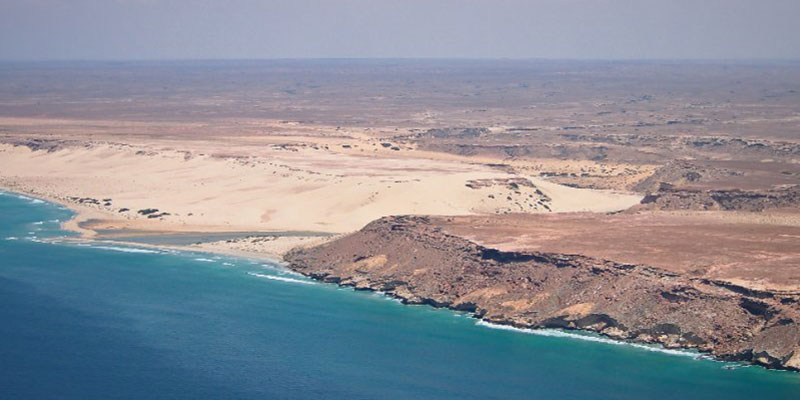In drought-stricken areas with access to seawater, modern, modular desalination plants can provide a steady source of drinking water.
With no change in weather forecast in sight, the humanitarian crisis continues to grow
The region of eastern Africa known as the Greater Horn of Africa may make a negligible contribution to greenhouse gases, but it’s bearing the brunt of climate impacts. Droughts have doubled in Kenya over the past two decades, and four consecutive failed rainy seasons have turned once mighty rivers into sandy deserts.
Water is central to food security, a fact sadly apparent this year in the region, which encompasses Djibouti, Eritrea, Ethiopia, Somalia, Somaliland, Kenya, Uganda, Sudan, and South Sudan. About 20 million residents of the region are at risk of starvation this year, and half of them are children.
Agriculture is the region’s economic lifeblood, but since few farms are irrigated, productivity relies completely on rainfall. Dry conditions on this scale have not been recorded since 1981. Approximately 3 million livestock have perished during the last three years of drought. Ethiopia, Kenya, and Somalia have already descended into severe famine, and it is likely to spread regionwide. Forecasts offer little hope of relief.
Workneh Gebeyehu, executive secretary of the region’s Intergovernmental Authority on Development, explained:
The March, April, May rains are crucial for the region and, sadly, we are looking at not just three, but potentially four consecutive failed seasons. This, coupled with other stress factors such as conflicts in both our region and Europe, the impact of COVID-19, and macro-economic challenges, has led to acute levels of food insecurity across the greater Horn of Africa.
The war in Ukraine has only made things worse for the Horn of Africa, driving up the price of food and fuel and diverting the attention of aid agencies and the public. The United Nation’s World Food Program warns that aid shortfalls associated with the war in Ukraine could allow the humanitarian catastrophe to spread if funding doesn’t increase soon. Although we know that early intervention is crucial to averting crises, funding has slowed to a trickle and the Horn of Africa will probably face a year of spreading famine.
Sean Granville-Ross of Mercy Corps emphasized that the Horn of Africa cannot afford to wait for the end of one crisis before preparing for the next, and the international response should prioritize short-term need while funding long-term, smart interventions that can create long-term resilience.
Water and Wastewater Solutions
Today, aid agencies have new solutions that can make the most of scarce resources. For example, modular desalination units such as Fluence’s NIROBOX™ can now ship and install quickly to provide a supply of fresh water in areas with access to seawater, such as Somalia’s 3,000 km coastline.
In many inland areas in the region, though, there is virtually no water source to treat. Under severe drought conditions, the practice of using water once and then discharging it as wastewater makes little sense. Fluence’s modular Aspiral™ wastewater plants treat municipal wastewater for nonpotable water reuse applications such as irrigation.
Fluence is an active water company in Africa, with decades of experience and a catalog of equipment suited to helping villages make the most of their water resources. Water Management Services‘ BOO and BOOT performance-based contracts can also deliver life-saving infrastructure where it was never financially possible before. Contact Fluence for equipment that can deliver long-term resilience in areas most vulnerable to drought.

